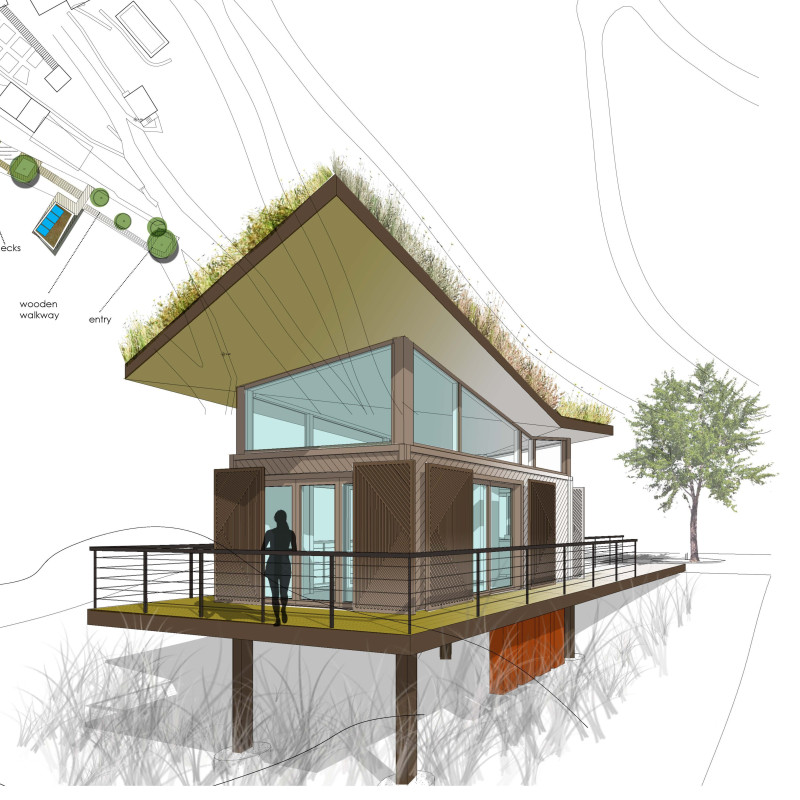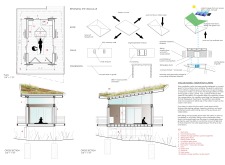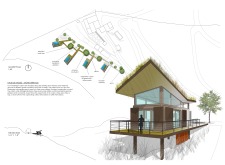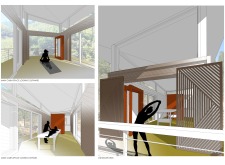5 key facts about this project
The cabin features a central communal area complemented by private zones for meditation. Its layout encourages flow and interaction while maintaining opportunities for personal retreat. The use of large operable windows provides extensive views of the surrounding landscape, enhancing natural light and creating a seamless transition between indoor and outdoor spaces. The design approach prioritizes user experience, ensuring that the environment supports activities centered on wellness and mindfulness.
The architecture of the Vale de Moses Meditation Cabin stands out through its careful consideration of form and materiality. The organic shapes of the roof resemble natural formations, helping the structure blend into the landscape. This is an essential aspect of its design, as it seeks not only to minimize visual impact but also to promote an immersive natural experience. The incorporation of green roofs fosters local biodiversity while contributing to energy efficiency. This system, along with solar panel installations, reflects a commitment to sustainable architecture, addressing contemporary environmental concerns.
The use of varied materials throughout the cabin enhances its functionality and aesthetic appeal. Thick masonry walls provide structural integrity and thermal mass, while the terracotta roof offers a cultural connection to local architectural traditions. Wooden elements used in flooring and window frames bring warmth to the interior, enhancing the overall sensory experience of the space. The cabin’s design succeeds in offering adaptable areas that can serve multiple purposes, showcasing flexibility in architectural planning.
The Vale de Moses Meditation Cabin is a noteworthy example of how architecture can facilitate well-being through thoughtful design. The project encourages exploration of architectural ideas that merge functionality with nature, creating an environment conducive to meditation. To gain deeper insights into the architectural plans, sections, and overall design approach, readers are encouraged to examine the project presentation further.


























